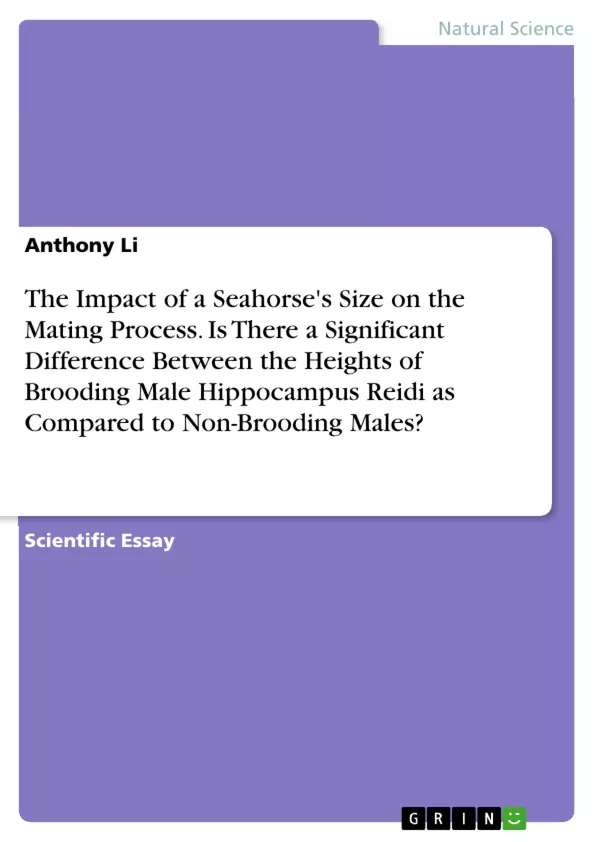Unlike other species, male seahorses are the carriers of their offspring. The reason for that remains still unknown, two theories are widespread: first, that since creating life takes quite a bit of energy, having the male seahorse carry the babies splits the energy load between the two parents. A second reason could be that this allows seahorses to reproduce more quickly, since it gives the female seahorse more time to make more eggs
The question that is pursued in this thesis is: Does size give male Hippocampus reidi a significant advantage in finding mates? In the wild, size can be quite important. Larger male seahorses can intimidate smaller seahorses, especially when competing for a mate. A bigger sized seahorse can likely defend its territory and offspring better than a smaller sized seahorse, thus becoming more appealing for female seahorses. In addition, a larger seahorse could signify an older, more experienced and capable seahorse. The assumption is, that there indeed is a significant difference between the heights of brooding male and non-brooding male Hippocampus reidi. (The term "brooding male" refers to male Hippocampus reidi which were observed to having a bulging brooding pouch containing seahorse eggs.)
The measuring of seahorse height is a quick process, and has not been believed to do any harm for years. A statistical analysis using an unpaired t-test will be made to test the initial hypothesis.
Table of Contents
- Preface
- Introduction
- Body
- Hypothesis
- Variables
- Raw Data
- Calculations
- Conclusion and Evaluation
- Bibliography
Objectives and Key Themes
This internal assessment aims to investigate whether there is a significant difference in height between brooding and non-brooding male Hippocampus reidi seahorses. By analyzing data on the heights of these two groups, the research seeks to determine if size plays a role in mating success for male seahorses.
- Sexual dimorphism in seahorses
- Male pregnancy and its implications
- The role of size in mating success
- The conservation status of seahorses
- Challenges in researching seahorse biology
Chapter Summaries
The preface provides background information on the author's initial interest in seahorses, focusing on the unusual phenomenon of male pregnancy. It highlights the limited research on seahorses due to their fragility and endangered status.
The introduction formally presents the research question: "Does size give male Hippocampus reidi an advantage in finding mates?" The author outlines the specific data to be analyzed, which involves measuring the heights of brooding and non-brooding male seahorses.
The "Body" section delves into the methodology used to collect and analyze the data, outlining the hypothesis, variables, raw data, and calculations employed. It provides a detailed explanation of the research process and the specific measurements used to assess height differences.
Keywords
This research explores the relationship between size and mating success in male Hippocampus reidi seahorses. Key concepts include sexual dimorphism, male pregnancy, conservation status, and data analysis methods. The study highlights the challenges of researching endangered species and the need for further investigation into seahorse biology.
- Quote paper
- Anthony Li (Author), 2016, The Impact of a Seahorse's Size on the Mating Process. Is There a Significant Difference Between the Heights of Brooding Male Hippocampus Reidi as Compared to Non-Brooding Males?, Munich, GRIN Verlag, https://www.grin.com/document/377051



